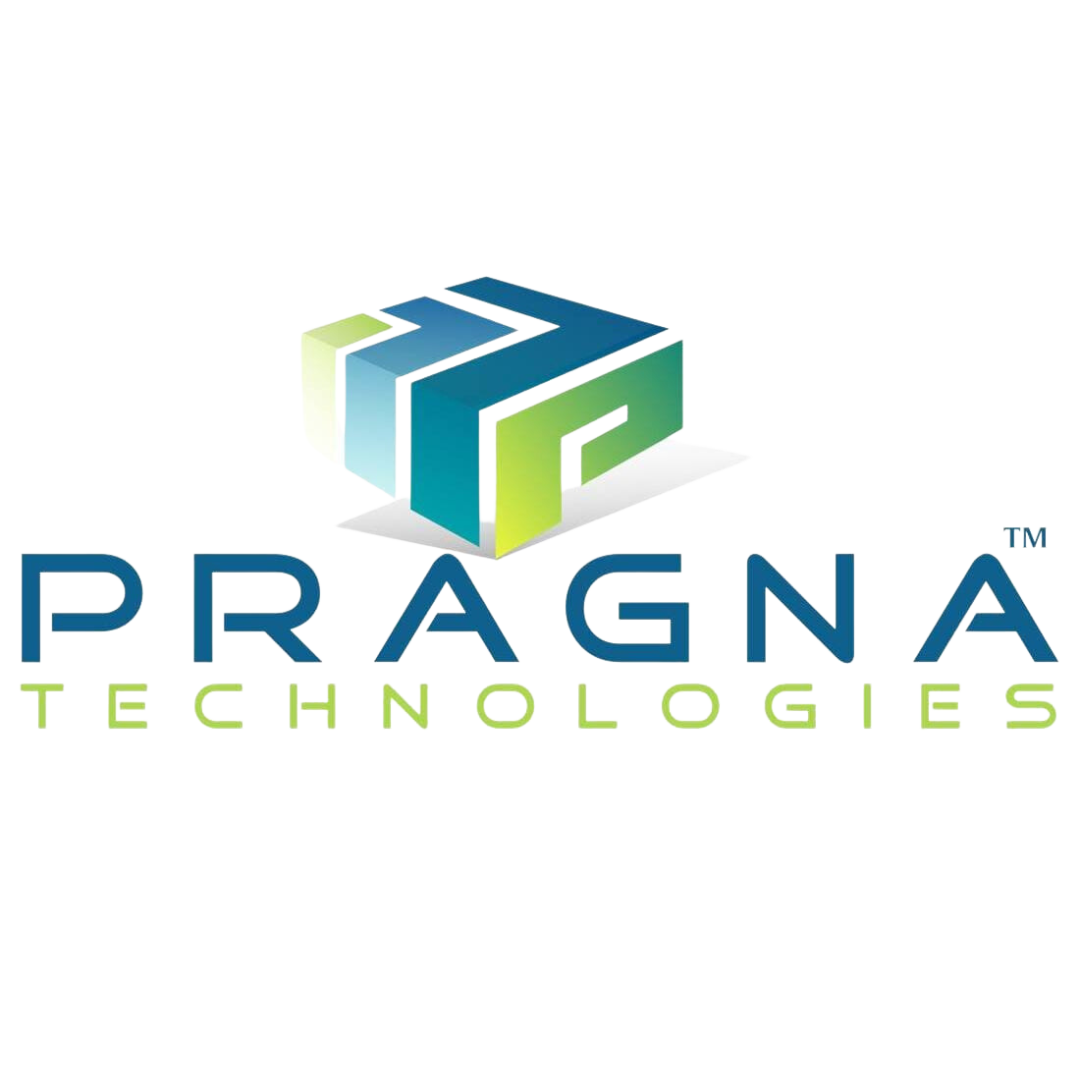FICO Online Training
About Instructor

Learn SAP FICO like never before, exclusively from Pragna Technologies, within 6 months duration with total internal lab facility, all real-time scenarios, printed material, in-depth controlling, and free remote server.
The Overview Of SAP FICO Online Training:
Enterprise Structure:
1. Organizational Units
2. Creation of Company, Company Code, Business Area, Functional Area, Credit Control Area
3. FM Area, Consolidated Business Area
4. Assignment of Organizations units
Financial Accounting Basic Settings:
1. Creation of Fiscal Year, Posting period, Field Status. Variant and Field Status Groups, Document Types and Number ranges, Tolerance Groups, Tax Procedure
2.Currency and ledger settings in HANA
New General ledger accounts:
1.Chart of Accounts and assignment to company code, changes in HANA
2. Account Groups and screen layout
3.Define Retained Earnings Account
4. General Ledger Master records and Account Types
5.Document Splitting
6.Leading, Extension ledgers, simulation ledgers, and Non-Leading Ledger
7.CO-FI Real-Time Integration changes (HANA changes)
Bank Accounts:
1. Creation of House Banks
2. Creation of Bank Accounts with NWBC
3. Creation of Check Number Ranges
4. Manual Check creation
5. Issued checks Cancellation
6. Bank Reconciliation
General Ledger Accounting
1.General Ledger Postings ACDOCA table
2. Document display and account display
3. Park Document, Hold Document
4. Sample Document and Recurring Document
5. Month-end Provisions-Accrual/Deferral
6. Documents and Open Item Management
7. Standard Payment, Partial Payment, and Residual items method
8. Define void reason codes
9. Reversal of documents-types of reversals
10. Foreign Currency Exchange rate types creation
11. Foreign Currency translation ratio creation
12. Maintenance of Exchange rates in Forex table
13. Foreign Currency Postings
14. Revaluation of Foreign currency Balances
15. FCV with Simulation ledgers
16.Balance Interests Calculations
17.Cash Journal
Accounts Payables
Basic Settings for Accounts Payable
1. Creation of vendor account groups with Screen Layouts and BP Groups
2. Creation of number ranges for vendor master records and BP settings
3. Assignment of number ranges to vendor account groups
4. Creation of tolerance group for vendors
5. Creation of vendor master and Business Partner
6. Posting of vendor transactions (invoice posting, payment posting, credit memo)
7. Partial and Residual Payments Postings
8. Settings for advance payments to parties (down payment) and clearing of down payment against invoices (special GL transactions)
9. Outgoing Payment with Clearing
10. Advance Payment Postings
11. Clearing of Advance against Purchases
12. Define Terms of Payment
13. Automatic Payment Program (APP) with Block, Changing House Bank, Special GL, with different Payment Terms
14. Cash Discounts
15. Discount with Installment Payment – Partial and Residual
16. Discount with Main Terms of Payments and Installment Terms of Payments
17. Credit Memo Postings
18. Open Item Due Date Analysis
19. Vendor Foreign Currency Postings
20. Foreign Vendor Revaluation
Accounts Receivable:
Basic Settings for Accounts Receivable:
1. Creation of customer account groups with Screen Layouts and BP groups
2.Creation of number ranges for customer master records and BP settings
3. Assignment of number ranges for customer account groups
4. Creation of tolerance group for customers
5. Creation of customer master with BP (display/change/block/unblock of vender master)
6. Dunning Procedure
7. Execute with Dunning with block
8. Execute with Dunning with Interest
9. Execute with Dunning with Charges
10. Execute with Dunning with Special GL
11. Execute with Dunning with Vendor
12. Bill Discounting Transactions
13. Sales Invoice Posting
14. Display Customer Account Balances
15. Clearing of Transactions where Vendor also is a Customer
16.Incoming Receipt with Clearing
17. Advance Receipt Postings
18. Clearing of Advances against Sales
19.Item Interest Calculation
20.Bad debts
New Asset Accounting
1. Defining chart of depreciation
2. Assignment of the chart of depreciation to company code
3. Dummy ledgers, dep areas for accounting principles
4. Defining account determination
5. Definition of screen layout rules
6. Definition of number ranges for asset classes
7. Integration with General Ledger & Posting rules
8. Defining Depreciation key
9. Definition of multilevel methods
10. Definition of period control methods
11. Creation of main asset master records
12. Creation of sub-asset master records
13. Acquisition of fixed assets with new posting logic
14. Acquisition with Automatic Off-Setting Entry
15. Acquisition within House Production
16. Sale of fixed assets
17. Transfer of assets
18. Scrapping of assets
19. Depreciation run with multiple ledgers and multiple currencies
20.Depreciation with Smoothing
21. Line item Settlement of assets under construction of capital work in progress
22. Asset History Sheet
23.Asset Purchases by MM
24.Internal Order to AUC Settlement
25.Old Asset data transfer
26.Asset revaluation
Reports
1.Financial statement version
2.General Ledger, Accounts Payable, Accounts Receivable, and Assets Reports
FI-MM Integration
Definition of organizational units in materials management i.e. plant, storage location, and purchase Organization
Assignment of organizational units to each other
Definition of tolerance groups for purchase orders
Definition of tolerance groups for goods receipt
Definition of tolerance groups for invoice verification balance sheet items.
Definition of vendor-specific tolerances
Creation, display, and change of material master records
Creation of plant parameters
Maintenance of posting periods for materials management
Maintenance of parameters for invoice verification
Maintenance of plant parameters for inventory management and physical inventory
Definition of attributes for material types
Assignment of GL accounts for material transactions in financial accounting
(Integration of MM with FI)
ML activation
Creation of purchase order, posting of goods receipt, invoice verification and
Goods issue for cost center – PO Price differs from Invoice Price -full stock is available
Goods issue for cost center – PO Price differs from Invoice Price -stock is not available
Goods issue for cost center – PO Price differs from Invoice Price –Partial stock is available
Goods issue for cost center – PO Price differs from Invoice Price –Standard Price
Asset purchases in MM
FI-SD Integration
Definition of the sales organization
Definition of distribution channels
Definition of divisions
Assignment among various organizational units in SD
Definition of partner functions
Definitions of the shipping point and loading points
Definition of pricing procedures
Determining the shipping points
Determining the pricing procedures
Maintenance of SD condition types
Maintenance of condition records
Assignment of GL accounts for sales transactions( integration of FI with SD)
Creation of sales order
Initialization of stock
Posting the delivery of goods
Creating the sales order
Goods delivered to Customer
Billing
Cash Received from Customer
Other Topics
Year-End Procedure-
Gl A/Cs Balance Carry Forward
Vendor Balance Carry Forward Customer Balance Carry Forward
Assets Balance Carry Forward
Change Open Item Management
Intercompany Transactions
Vendor Is Customer Scenario
Fiori Apps – Data Entry
Data Model in HANA
Table changes in HANA
Universal Journal
best SAP FICO training in Hyderabad
Controlling
(PROJECT-ORIENTED)
Basic settings for controlling
Maintain Controlling Area
Defining Number ranges for Controlling Documents
Maintain Planning Versions
Cost Element accounting
Creation of primary cost elements from the financial accounting area
Creation of primary cost elements in controlling area
Creation of Secondary Cost Elements in Controlling Area
Display/Change of cost element master records
Primary cost element categories
Secondary cost element categories
Creation of primary cost element groups
Default account assignments
Cost Center Accounting
Defining Cost Center Standard Hierarchy
Creation of Cost Centers and cost center groups
Display/Change cost center master records
Creation of cost center groups
Creation of Activity Types
Grouping of Activities
Creation of SKF
Grouping of SKF
Posting to cost centers
Reposting of co line items
Repost of Costs
Planning for cost centers – Manual
Activity-dependent planning
Activity independent planning
Activity Output Planning
Creation of Own Planner profile
Planning for cost centers – Excel upload
Overhead Calculation
Create Cost Component Splitting Structure
Activity Cost Calculation
Activity Price Calculation
Cost center reports
Allocation Methods – Period End Procedure
Define Assessment Cycle- Plan and Actual
Execute Assessment Cycle- Plan and Actual
Define Distribution Cycle – Plan and Actual
Execute Distribution Cycle – Plan and Actual
Periodic Reposting
Indirect activity allocation
Allocation Cycle with multiple Segments
PP Integration
BOM
Routing
Work Center
MRP run.
Product Cost Controlling
Product Cost Planning:
Introduction to product cost controlling
Data Flow in Product costing
Areas in Product cost controlling
Cost objects
Define Cost Sheet
Define costing variant
Define costing Type
Define Valuation variant
Define Quantity Structure Control
Define Transfer Control
Define Date Control
Check Costing Variant to Manufacturing Orders (PP)
Define Goods Received Valuation for Order Delivery
Define Main Cost Component Structure
Product Cost by Order
Work In Process Calculation:
Define Results Analysis Keys
Define Cost Elements for WIP Calculation
Define Results Analysis Versions
Define Valuation Methods (Actual Costs)
Define Line IDs
Define Assignments
Define Update
Define Posting Rules for Setting Work in Process
Variance Calculation:
Define Variance Keys
Define Default Variance Keys for Plants Define Target Cost Version
Assign Variance Key in Material Master
Settlement:
Create Settlement Profile
Create PA Transfer Structure
Maintain Number Ranges for Settlement Documents
Creation of BOM
Create Routing
Automatic Account Assignment- integration with MM
Standard Cost Estimation
Mark and Release
Collective Cost estimation
COPA – Controlling Profitability Analysis
Account-based COPA
Costing based COPA
1. Introduction to profitability analysis
2. Data Flow in profitability Analysis
3. Maintaining the operating concern
4. Assignment of controlling area to operating concern
5. Activating the profitability analysis
6. Define number ranges for actual postings
7. Mapping of SD conditions types to COPA value fields
8. Maintain Characteristics
9. Maintain Value Fields
10. Define Profitability Segment Characteristics
11. Maintain Characteristics Values
12. Define characteristics Derivation
13. Define and Assign Valuation Strategy
14. Define Keys for accessing material cost estimates
15. Assign Costing Keys to any characteristics
16. Assign Value Fields
17. Define Number Ranges for Planning Data
18. Maintain Versions
19. Assign Quantity Fields
20.Define PA Transfer Structure
21.Direct posting from FI/MM
22.Value flow from Cost Center to COPA
23. Value flow From Internal Order to COPA
24. Value Flow from Production Order to COPA
25. COPA Summarization
26.COPA Realignment
27. COPA Derivation Rules
28. COPA Cost Sheet
29. COPA Valuation Strategy
30.Creation Of Forms
31. Creation of reports
32.Execute the reports
Internal Orders
1. Use of Internal order types
2. Settlement profile
3. Planning profile
4. Budget profile
5. Tolerance for budgeting and availability control
6. Order types
7. Real orders and Statistical Orders
8. Creation of secondary cost elements for Internal and External Settlements
9. Planning for internal orders
10. Entering budget information
11. Actual data posting
12. Displaying internal order information
13. Displaying budget control availability
14. Internal Order to AUC settlement
15. AUC to Asset Settlement
16. Internal Order with Investment Management
17. Information Reports
18. Settlement of Real internal orders to cost centers
Profit Center Accounting
1. Basic Settings for Profit Center Accounting
2. Creation of Profit Centers
3. Maintenance of control parameters for actual postings
4. Maintaining planning versions for-profit centers
5. Maintaining the number ranges of for-profit center documents
6. Creation of profit center master records
7. Display of profit center master records
8. Changing the profit center master records
9. Creation of revenue cost elements
10. Automatic Assignment of Revenue elements for Profit Centers
11. Assignment of profit centers in cost center master records
12. Creation of account groups in profit center accounting for planning
13. Planning for profit and loss account items
14. Planning for balance sheet items
15. Posting of transactions into profit centers
16. Generating the variance reports for profit and loss account items
17. Generating the variance reports for balance sheet items.
18. Derivation rules creation for revenue elements
19. Derivation rules creation for Balance Sheet accounts
SAP FICO Online Training, FICO Online Training Hyderabad, FICO Online Training India
The Prominence Of SAP FICO Online Training:
Financials and Controlling is one of the most important modules. SAP FICO stores all Financials transactions of Business. Financials are for external reporting purposes with this we can prepare Financial Statements. Controlling is for internal reporting purposes, with this we can plan data, post actual data, and do variance analysis. Any Finance background students, Finance department experience people can learn FICO to get into the IT field. It’s a very good opportunity for commerce background students to shift careers to Software. After finishing the course you will get different types of jobs i.e FICO consultant, Support Consultant, Business Process Executive (BPE), End User. We are providing 100% real-time project training with job support.
We are providing FICO online training in Hyderabad, India with depth knowledge of all real-time scenarios. In FI we are covering General Ledger, Accounts payable, Accounts Receivables, Asset Accounting and FI additional topics like Bank Reconciliation statements (Electronic, Manual), Lock Box system, Bills of exchange, Bad debts, Customer is Vendor, Foreign Currency revaluations, Open item change, New GL Accounting, and many more real-time project scenarios so that a student will easily get a job.
Controlling is for Internal reporting purposes it is like our Costing and Management Accounting what we have studied in our Academics. In Controlling we are covering Cost Elements, Cost Center Accounting, Product Costing, COPA (Costing based and Account-based), Internal Orders, Profit Center Accounting, Material Ledger and many more special scenarios preparing planning layouts in cost center accounting, calculating activity prices, product cost by order, Join and By product, Mixed costing, different types of sub-contracting, different types of Overhead calculations, Scrap calculations like Operational scrap, Assembly Scrap, Component Scrap, Product cost by Period (PCC), Sales Order costing (MTO)
is a No.1 ERP product because of Integration between all departments. We are learning FI-MM module Integration, FI-SD integration, and CO-PP integration. We are learning how value flows to Controlling from different modules and sub-modules. Our FICO training will make you a Consultant. We are providing the best FICO Online Training in Hyderabad with printed material, 24*7 server access, 100% job assistance. We can proudly say that we are the leaders in FICO training. We are also learning GST. How to calculate Central GST, State GST, Integrated GST, and Union Territory GST. Pragna Technologies is the best training Center for FICO.
More number of Organisations are implementing. We will be having more Projects available. More jobs are available for accounts background students if we learn FICO. To learn FICO B.Com, M.Com, MBA, CA, ICWAI, CS are eligible.
Reviews Statistic
Be the first to review “FICO Online Training”
You must be logged in to post a review.


Reviews
There are no reviews yet.